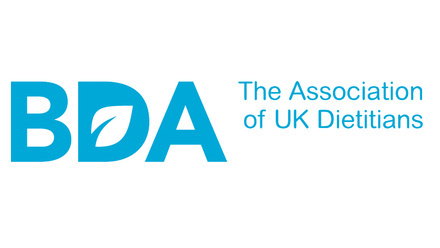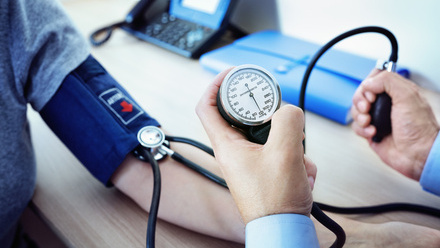
Do we need sugar in our diet?
Sugar is a type of carbohydrate, which provides calories (energy). In the UK, many of us consume a diet that is too high in sugar, which may have negative health implications. This fact sheet will look at:
- the different types of sugar
- foods that have a high sugar content
- the impact of a high sugar diet on our health
- how to understand food labels
Types of sugar
Sugar is a broad term for a simple carbohydrate. Sugars can be:
- natural (e.g., found in fruits, vegetables, plants and dairy products)
- commercially produced in large quantities and added to foods, known as ‘free sugars’
What are free sugars?
‘Free sugars’ is a term used for all sugar added to foods, such as sucrose (table sugar) or glucose. This can be added by the manufacturer, cook or the consumer. It also includes sugars naturally present in honey, syrups and unsweetened fruit juices.
Sugar found naturally in milk and milk products (lactose), as well as the sugar contained in whole fruit and vegetables (fructose), don't count as free sugars. We do not need to reduce the amount of these products we eat.
The Scientific Advisory Committee on Nutrition (SACN) recommends that free sugars should account for no more than five per cent of our total daily energy (calories) intake. This is equivalent to:
- 19g or five sugar cubes for children aged four to six
- 24g or six sugar cubes for children aged seven to ten
- 30g or seven sugar cubes for 11 years and over
Sugar in fruit
Whole fruit contains fibre, vitamins, minerals and some natural sugar. These are a healthy alternative to foods high in free sugars and fat. Pure fruit juices and smoothies are often unsweetened, as the sugar comes naturally from the fruit. However, free sugars are released during the juicing process, so intake should be limited to a small 150ml glass, once a day. It will also count towards one of your 5-a-day.
Which foods are high in free sugars?
Foods that contain high levels of free sugars are:
- Sugar-sweetened drinks (including fizzy drinks, juice drinks, energy drinks, squashes and alcoholic drinks)
- Cereal-based products (biscuits, cakes, pastries and sweetened breakfast cereals)
- Confectionary (chocolate, chocolate spread and sweets)
- Dairy products, such as sweetened flavoured milk and yoghurts
Savoury products can also contain some sugar, such as tomato ketchup or pre-prepared sauces. It is important to read food labels to know how much sugar they contain.
Sugar and health
The SACN report (2015) found that high intakes of sugar is associated with greater risk of tooth decay and obesity. Consumption of sugar-sweetened drinks tends to be high in children aged between 11 and 16.
Some research also suggests that drinking sugar-sweetened drinks is linked to an increased risk of type 2 diabetes. This is further increased by the number of sugar-sweetened drinks that is consumed.
The UK introduced a ‘soft drinks industry levy’ (a ‘sugar tax’ on companies making soft drinks) in 2016, where a tax is added to drinks with added sugars. Manufacturers are reducing the amount of sugar added to fizzy drinks and squashes. Look for options which have no added sugar and choose these where possible.
Sugar and weight
A small amount of sugar will not make you overweight. A high-sugar diet may make excess weight gain more likely if overall calorie intake is higher than the body needs. High-sugar diets are not the only cause of weight gain: too many calories from any source will make you put on weight.
Sugary drinks are thought to be the biggest problem, as they tend to be high in free sugars and low in other nutrients and it’s easier to overdo the amount you drink.
Sugar and tooth decay
High sugar intakes often lead to tooth decay. It is important to avoid frequent sugary drinks and snacks for your teeth and your overall health.
Free sugars and acids found in pure fruit juices, smoothies and sweetened squash can cause tooth decay. Watch your portion size and have these with a meal.
'Diet' soft or fizzy drinks have little or no sugar; however, most are still acidic enough to harm your teeth if you drink them too often.
Sugar and food labels
You can get an idea if a certain type of food is high in free sugars by looking at the ingredients list on the packaging. Sugar added to food must be included, and if it is near the top of the list, the food is likely to be high in free sugars.
To confuse matters, sugar is not always listed as ‘sugar’. Other words used to describe sugar can be cane sugar, honey, brown sugar, fruit juice concentrate/purees, syrup, fructose, glucose, treacle, maltose or sucrose.
Reading food labels
Nutritional information must include the amount of sugar in the product, often labelled as ‘of which sugars’. This is the total amount of sugar in the product, not just the free sugars. This information helps us to make healthier choices. The nutrition panel on the back or side of a label will provide information per 100g and/or per portion, which means you can compare like-for-like products.
Some products will provide a traffic light summary on the front of pack:
|
|
Low (green) |
Medium (amber) |
High (red) |
High per portion - if more than 100g/150ml (red) |
|
Sugar in food |
5g or less |
between 5g and 22.5g |
more than 22.5g |
27g |
|
Sugar in drink |
2.5g or less |
between 2.5g and 11.25g |
more than 11.25g |
13.5g |
A product which is ‘red’ should be eaten with caution and less often. We should be aiming to eat more green and amber products. Find out more about food labelling.
Summary
- In general, we eat too many free sugars in our diet, with sugar-sweetened drinks being one of the biggest concerns
- Too many free sugars in our diet are linked to obesity and tooth decay
- Sugar found naturally in milk, fruit and vegetables isn’t classed as free sugar and we don’t need to limit the amount we eat
- Always read food labels and aim to eat food and drinks which are classed as low in sugar
- If you choose to eat sugary food or drinks, it’s best to have them at mealtimes
- Fresh fruit in between meals is a nutritious snack
- Water, low-fat milk, or unsweetened tea or coffee are good choices for a drink between meals
Source(s)
Amoutzopoulos, B.; Steer, T.; Roberts, C.; Collins, D.; Page, P. Free and Added Sugar Consumption and Adherence to Guidelines: The UK National Diet and Nutrition Survey (2014/15–2015/16). Nutrients 2020, 12, 393. https://doi.org/10.3390/nu12020393
Ambrosini, G., Oddy, W., Huang, R.C., Mori, T.A., Beilin, L.J. and Jebb, S.A., (2013) Prospective associations between sugar-sweetened beverage intakes and cardiometabolic risk factors in adolescents Am J Clin Nutr 98 pp327–34.
Avena, N.M., Rada, P. and Hoebel, B.G., (2008) Evidence for sugar addiction: Behavioral and neurochemical effects of intermittent, excessive sugar intake Neurosci Biobehav Rev. 32(1) pp20–39.
Basu, S., Yoffe, P., Hills, N. and Lustig, R.H., (2013) The Relationship of Sugar to Population-Level Diabetes Prevalence: An Econometric Analysis of Repeated Cross-Sectional Data. PLoS ONE 8(2): e57873. doi:10.1371/journal.pone.0057873
Benton, D., (2010). The plausibility of sugar addiction and its role in obesity and eating disorders. Clinical Nutrition, 29 (3), 288-303
Bursać, B.N., Vasiljević, A.D., Nestorović, N.M., Veličković, N.A., Vojnović Milutinović, D.D., Matić, G.M. and Djordjevic, A.D., (2013) High-fructose diet leads to visceral adiposity and hypothalamic leptin resistance in male rats - do glucocorticoids play a role? The Journal of Nutritional Biochemistry (2014), doi: 10.1016/j.jnutbio.2013.12.005
Crawford, P.B., Woodward-Lopez, G., Ritchie, L. and Webb, K., (2008) How Discretionary Can We Be with Sweetened Beverages for Children? JADA doi: 10.1016/j.jada.2008.06.439
Department of Health (1989). Report on Health and Social Subjects: 37. Dietary Sugars and Human Disease. London: HMSO.
Department for environment, food and rural affairs (2017) Food labelling: giving food information to consumers. Available from: https://www.gov.uk/guidance/food-labelling-giving-food-information-to-consumers (accessed 5 January 2022)
Downes Gastrich, M., Bachmann, G. and Wien, M., (2007) A Review of Recent Studies From 1986 to 2006 Assessing the Impact of Additive Sugar in the Diet Top Clin Nutr 22 (2) pp. 137–155
Dubois, L., Farmer, A. and Girard, Manon., (2007) Regular sugar-sweetened beverage consumption between meals increases risk of overweight among preschool-aged children J Am Diet Assoc.107 pp924-934.
Eshak, ES; Iso, H; Mizoue, T; Inoue, M; Noda, M; Tsugane, S (2013) Soft drink, 100% fruit juice, and vegetable juice intakes and risk of diabetes mellitus Clinical Nutrition 32 pp300-308 [online] Available at: www.clinicalnutritionjournal.com/article/S0261-5614(12)00170-7/abstract [Accessed 4 January 2022]
Figlewicz, D.P., Ioannou, G., Bennett Jay, J., Kittleson, S., Savard, C. and Roth, C.L., (2009) Effect of moderate intake of sweeteners on metabolic health in the rat Physiology & Behavior 98:5, pp618–624 [online] Available at: www.sciencedirect.com/science/article/pii/S0031938409003151 [Accessed 4 January 2022]
Food Standards Agency (2021) Packaging and labelling. Available online: https://www.food.gov.uk/business-guidance/packaging-and-labelling (accessed 5 January 2022)
HM revenue and customs (2016) Soft Drinks Industry Levy. https://www.gov.uk/government/publications/soft-drinks-industry-levy/soft-drinks-industry-levy. (accessed 5 January 2022)
Hu, F.B. and Malik, V.S., (2010) Sugar-sweetened beverages and risk of obesity and Type 2 #diabetes: Epidemiologic evidence Physiology & Behavior 100 (1) pp47–54
Imamura F, O’Connor L, Ye Z, Mursu J, Hayashino Y, Bhupathiraju S N et al. Consumption of sugar sweetened beverages, artificially sweetened beverages, and fruit juice and incidence of type 2 diabetes: systematic review, meta-analysis, and estimation of population attributable fraction BMJ 2015; 351
Kosova, E.C., Auinger, P. And Bremer, A.A., (2013) The relationships between sugar-sweetened beverage intake and cardiometabolic markers in young children J Acad Nutr Diet. 113 pp219-227.
Johnson, L., Mander, A.P., Jones, L.R., Emmett, P.M. and Jebb, S.A., (2007) Is sugar-sweetened beverage consumption associated with increased fatness in children? Nutrition 23 pp557–563.
Ludwig, D.S., Peters, K.E. and Gortmaker, S.L., (2001) Relation between consumption of sugar-sweetened drinks and childhood obesity: a prospective, observational analysis Lancet 357 pp505–08
Lustig R H (2013) Fat Chance: The Bitter Truth About Sugar. London: Harper Collins.
Malik V.S., Schulze M.B. and Hu, F.B., (2006). Intake of sugar-sweetened beverages and weight gain: a systematic review. American Journal of Clinical Nutrition, 84 (2), 274-88.
Malik V S et al. (2010) Sugar-Sweetened Beverages and Risk of Metabolic Syndrome and Type 2 Diabetes – A meta-analysis: Diabetes Care, Volume 33, Number 11. pp 2477-2483.
Malik, V.S., Pan, A., Willett, W.C. and Hu, F.B., (2013) Sugar-sweetened beverages and weight gain in children and adults: a systematic review and meta-analysis Am J Clin Nutr 98 pp1084–102
McCance, R A, and Elsie M. Widdowson. Mccance and Widdowson's the Composition of Foods. 2015.
Montonen, J., Järvinen, R., Knekt, P., Heliövaara , M. and Reunanen, A., (2007) Consumption of sweetened beverages and intakes of fructose and glucose predict Type 2 Diabetes occurrence J. Nutr. 137: pp1447–1454
NHS (2020) Sugars: The facts [online] Available at: https://www.nhs.uk/live-well/eat-well/how-does-sugar-in-our-diet-affect-our-health/ (accessed 5 January 2022)
Page, K.A., Chan, O., Arora, J., Belfort-DeAguair, R., Dzuira, J., Roehmholdt, B., Cline, G.W., Naik, S., Sinha, R., Constable, R.T. and Sherwin, R.S., Effects of fructose vs glucose on regional cerebral blood flow in brain regions involved with appetite and reward pathways JAMA, 309(1) pp63-70 [online] Available at: http://jama.jamanetwork.com/article.aspx?articleid=1555133 [Accessed 5 January 2022]
Pell D, Mytton O, Penney T L, Briggs A, Cummins S, Penn-Jones C et al. Changes in soft drinks purchased by British households associated with the UK soft drinks industry levy: controlled interrupted time series analysis BMJ 2021; 372
Practice Based Evidence in Nutrition (PEN) (2012) Should fruit juice be introduced to an infant’s diet? If so, when and how? [online] Available at: www.pennutrition.com/KnowledgePathway.aspx?kpid=2503&pqcatid=144&pqid=2492 [Accessed 5 January 2022]
Public Health England (2015) Why 5% [online] https://assets.publishing.service.gov.uk/government/uploads/system/uploads/attachment_data/file/769482/Why_5__-_The_Science_Behind_SACN.pdf (accessed 5 January 2022)
Rennie, K.L. and Livingstone, B., (2007). Associations between dietary added sugar intake and micronutrient intake: a systematic review. British Journal of Nutrition, 97 (5) 832-841
Schultz, A., Neil, D., Aguila, M.B. and Mandarim-de-Lacerda, C.A., (2013) Hepatic Adverse Effects of Fructose Consumption Independent of Overweight/Obesity Int. J. Mol. Sci. 14, pp21873-21886
Stanhope, K.L., et al (2009) Consuming fructose-sweetened, not glucose sweetened, beverages increases visceral adiposity and lipids and decreases insulin sensitivity in overweight/obese humans J. Clin. Invest. 119 pp1322–1334. doi:10.1172/JCI37385.
Te Morenga L et al (2013) Dietary sugars and body weight: systematic review and meta-analyses of randomised controlled trials and cohort studies BMJ 346:e7492
University of Cambridge, MRC Epidemiology Unit, NatCen Social Research. (2021). National Diet and Nutrition Survey Years 1-11, 2008-2019. [data collection]. 19th Edition. UK Data Service. SN: 6533, DOI: 10.5255/UKDA-SN-6533-19
World Health Organisation. Diet, nutrition and the prevention of chronic diseases: report of a joint WHO/FAO expert consultation, Geneva: WHO, 2003. (WHO Technical Report Series; No. 916). [online] Available at: http://whqlibdoc.who.int/trs/who_trs_916.pdf [Accessed 5 January 2022]






